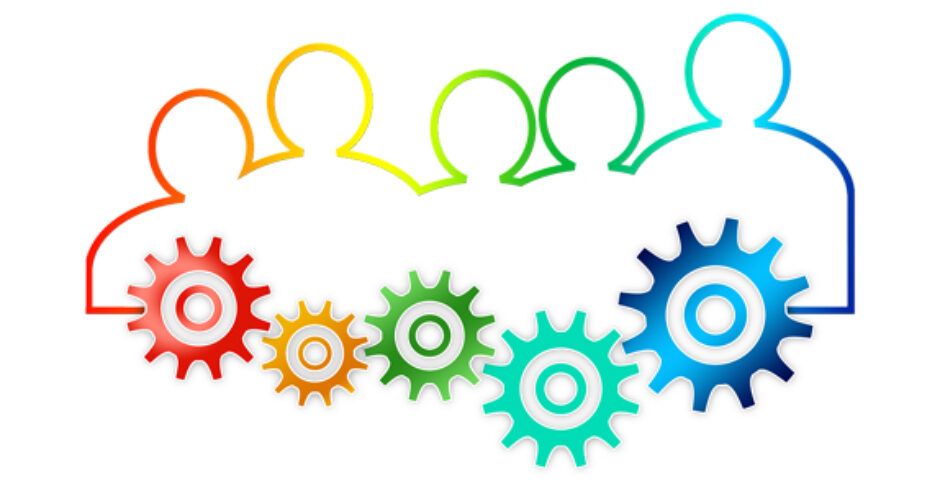It’s a well-worn phrase from Heraclitus:
“Everything changes and nothing stands still”
or otherwise translated: the only constant is change.
If that’s the case, change should be no surprise to anyone. It’s an everyday, ordinary thing – one could go so far as to say it’s the nature of life – so why do so many teams (and entire organisations) struggle to implement change smoothly?
Of course, that’s not true of all teams or organisations, but the fact that we hear of so many projects running late or not delivering the desired results, indicates that there’s something we are missing when it comes to getting people ready for change initiatives. And how ready your people are, will be a key determining factor in the successful delivery of any change project.
So, what are we missing? And what can we do differently?
There are some great project and change managers out there, and I’ve been privileged to work with some of them. The best are those who understand how change really occurs:
Change happens through the hearts and minds of one person at a time.
They, therefore, ensure that those affected by the proposed change are enrolled and engaged rather than being dragged kicking and screaming.
There are also some helpful change models out there that can support the process of change, which don’t need to be complicated. It makes total sense to ensure that people are aware of the need for change, make sure they’re informed about what’s happening, and give them the tools and the training required to do their work in the ‘new world’.
But in terms of truly helping people to understand and navigate change more easily and with less pain, most organisations are far from adept, and the change models don’t really provide the answers. More about that in future articles, but for today, let’s stick with what would be most helpful for people to understand, in order for them to feel more engaged with and open to change, rather than feeling like a victim of circumstance.
In my work with leaders, managers and individuals, it has become very clear that understanding the following is the difference that makes the difference when it comes to preparing your people for change.
- ‘Change’ doesn’t have any inherent properties of ‘positive’ or ‘negative’, ‘scary’, ‘unsettling’ or ‘disruptive’; change is whatever a person thinks it is in any moment.
The ‘moment’ piece is important because our thinking changes constantly; what looked daunting a moment ago can look exciting in the next, and vice versa.Contrary to what some models seem to suggest, there are no absolutes about what you should or will feel about a change, or at what point you should feel it.
- When we have feelings of fear and insecurity about a change, they are not coming from the change itself, or the people implementing it; they are coming from our own fearful and insecure thinking about the change.
- Our fears about change are largely made up of assumptions (i.e.: thoughts) about what our future will look like post-change. Being afraid of the future makes less sense when we see that these assumptions cannot possibly represent our actual future (because we don’t have a crystal ball) and we don’t have any idea how we will feel or react in a future situation because we’re not there yet; the way we think and feel in THIS moment is not transferable to the future.
- Human beings are fundamentally fine and innately resilient.
This understanding of how our experience of change (and of life) is being created through Thought is not yet shared widely in business, but when facilitated well (shared by someone who truly sees this for themselves), it has profound implications for how people will receive and engage with change.
Here are some common shifts I’ve observed:
| Thinks their experience is caused by the change | Understands their experience is created through Thought |
| Thinks their fears are an accurate reflection of reality and acts accordingly | Realises fears are thoughts, not facts, so not compelled to act on them |
| Takes ‘Conspiracy thinking’ seriously and shares amongst peers. Assumes he/she knows what others are thinking. | Seeks clarification if he/she has questions about motivations or reasons for change |
| Susceptible to being drawn into others’ emotional dramas | Able to help others get clarity and move forward |
| Acts to defend/protect own interests | Able to look more objectively and act from what’s best for the team and organisation |
| Finds reasons why the change is bad and not required; questions aggressively to pick holes or discredit the initiative | Open to hearing why the change might be necessary and beneficial; questioning constructively to improve understanding |
If you want the people in your organisation to be truly equipped for change, to ensure a successful transition, then help them to understand the workings of their own state of mind. It’s the biggest gift you could give them, and the best enabler for your change project.
In the next article, we’ll look more closely at resistance to change— what it really is and how you can effectively address it.
This article is brought to you exclusively by The Business Transformation Network.


